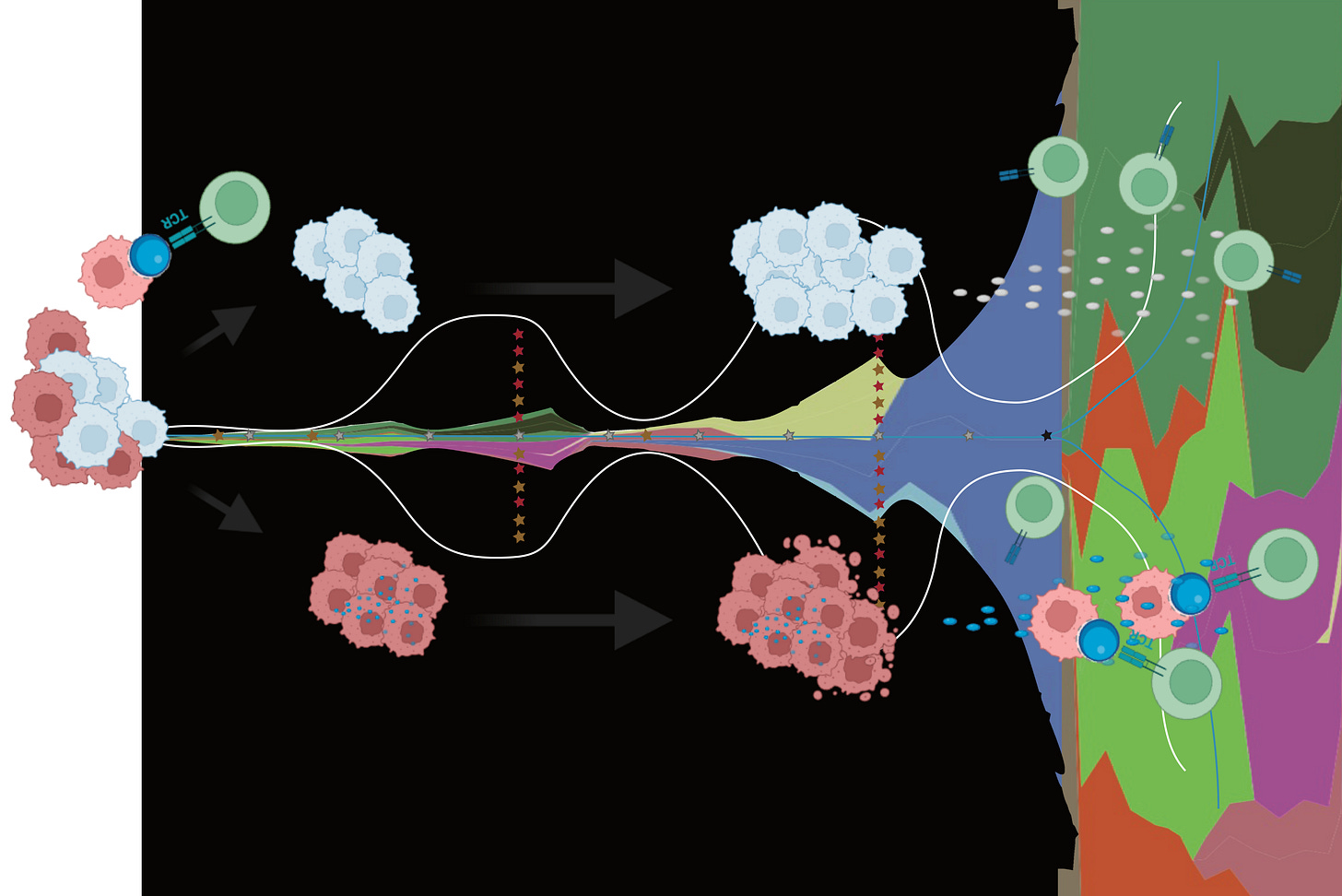This week in MathOnco 255
Adaptive therapy, spatial intratumoral heterogeneity, sparse clinical data, and stochastic processes
“This week in Mathematical Oncology” — May 25, 2023
> mathematical-oncology.org
From the editor:
Today’s newsletter heavily features articles on adaptive therapy — so many exciting advances recently published! Also included are papers on spatial intratumoral heterogeneity, sparse clinical data, and stochastic processes.
Thanks,
Jeffrey West
jeffrey.west@moffitt.org
Quantifying Intratumoral Heterogeneity and Immunoarchitecture Generated In-Silico by a Spatial Quantitative Systems Pharmacology Model
Mehdi Nikfar, Haoyang Mi, Chang Gong, Holly Kimko, Aleksander S. PopelInter- and intra-metastatic heterogeneity shapes adaptive therapy cycling dynamics
Jill Gallaher, Maximilian Strobl, Jeffrey West, Robert Gatenby, Jingsong Zhang, Mark Robertson-Tessi, Alexander R.A. AndersonEffective dose window for containing tumor burden under tolerable level
M. A. Masud, Jae-Young Kim & Eunjung KimSynthetic Model Combination: A new machine-learning method for pharmacometric model ensembling
Alexander Chan, Richard Peck, Megan Gibbs, Mihaela van der SchaarThe Impact of Longitudinal Data-Completeness of Electronic Health Record Data on the Prediction Performance of Clinical Risk Scores
Yinzhu Jin, Janick G. Weberpals, Shirley V. Wang, Rishi J. Desai, David Merola, Kueiyu Joshua LinDigital technologies: Innovations that transform the face of drug development
Elena S. Izmailova, Bilal AbuAsal, Hazem E. Hassan, Anindita Saha, Diane Stephenson
Smoothing in linear multicompartment biological processes subject to stochastic input
Alexander P Browning, Adrianne L Jenner, Ruth E Baker, Philip K MainiAdaptive therapy in cancer: the role of restrictions in the accumulation of mutations
David Fontaneda, Ramon Diaz-Uriarte
Learning Sensorimotor Agency in Cellular Automata
Developmental Systems Blog (Flowers lab, INRIA): Finding robust self-organizing “agents” with gradient descent and curriculum learning: individuality, self-maintenance and sensori-motricity within a cellular automaton environment
The newsletter now has a dedicated homepage where we post the cover artwork for each issue. We encourage submissions that coincide with the release of a recent paper from your group. This week’s artwork:
Based on the paper: Immune selection determines tumor antigenicity and influences response to checkpoint inhibitors, in Nature Genetics
Artist: Luis Zapata (@LuisglsZ)
Caption: “We explore the dynamic landscape of tumor evolution through our innovative single-cell stochastic branching model. This cutting-edge simulation captures the intricate interplay between positive and negative immune selection, offering valuable insights into the emergence and fate of phenotypically similar clones. Witness the unfolding of a vibrant ecosystem, represented by distinct colors, where clones expand, compete, and succumb to immune pressures (green cells). This model sheds light on the delicate balance between tumor heterogeneity and the immune system's role in shaping cancer progression, where the final outcomes are antigen-free edited (blue) and antigen-rich escaped (red) clones. Out method can identify these outcomes, providing an invaluable tool for researchers and clinicians seeking to develop novel immunotherapies and personalized treatment strategies.”
Visit the mathematical oncology page to view jobs, meetings, and special issues. We will post new additions here, but the full list can found at mathematical-oncology.org.
1. Jobs
Current subscriber count: >1.6k











